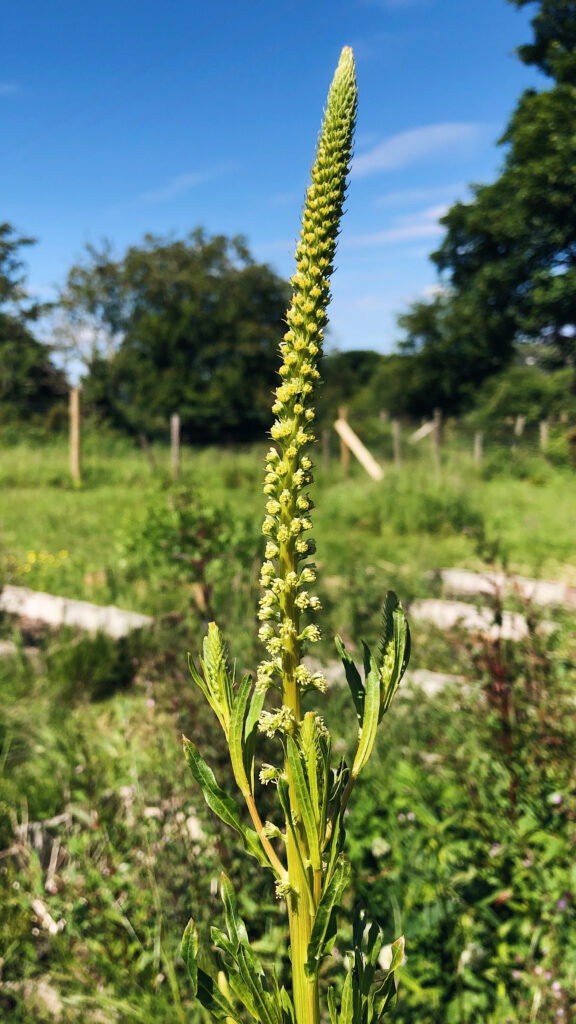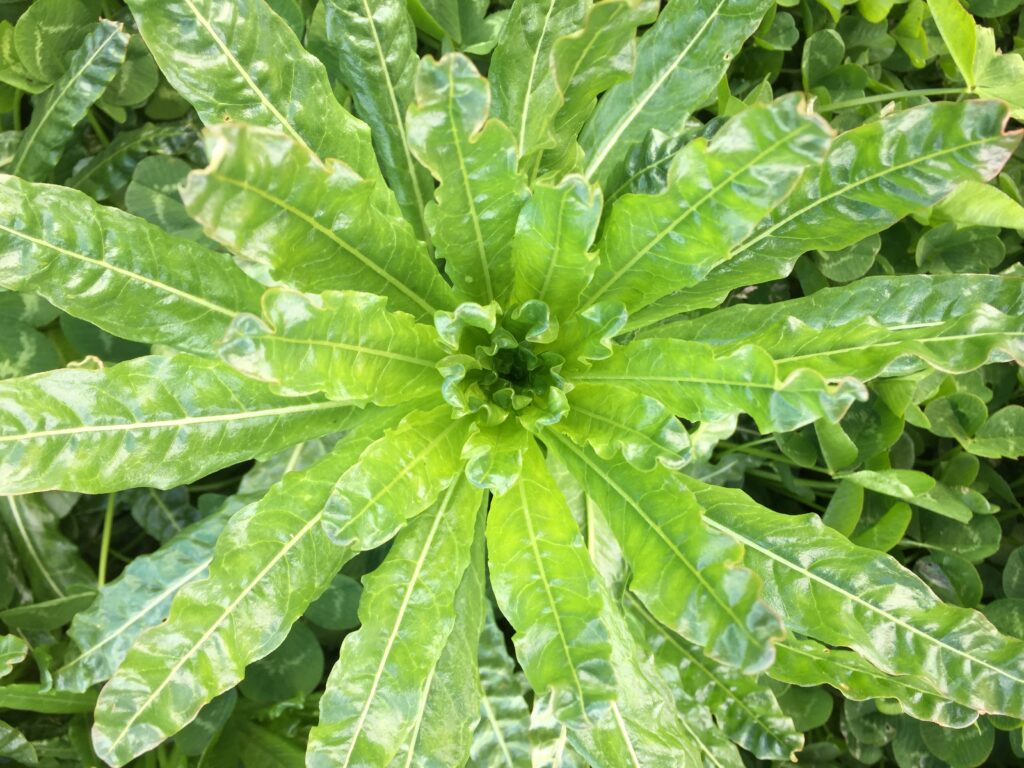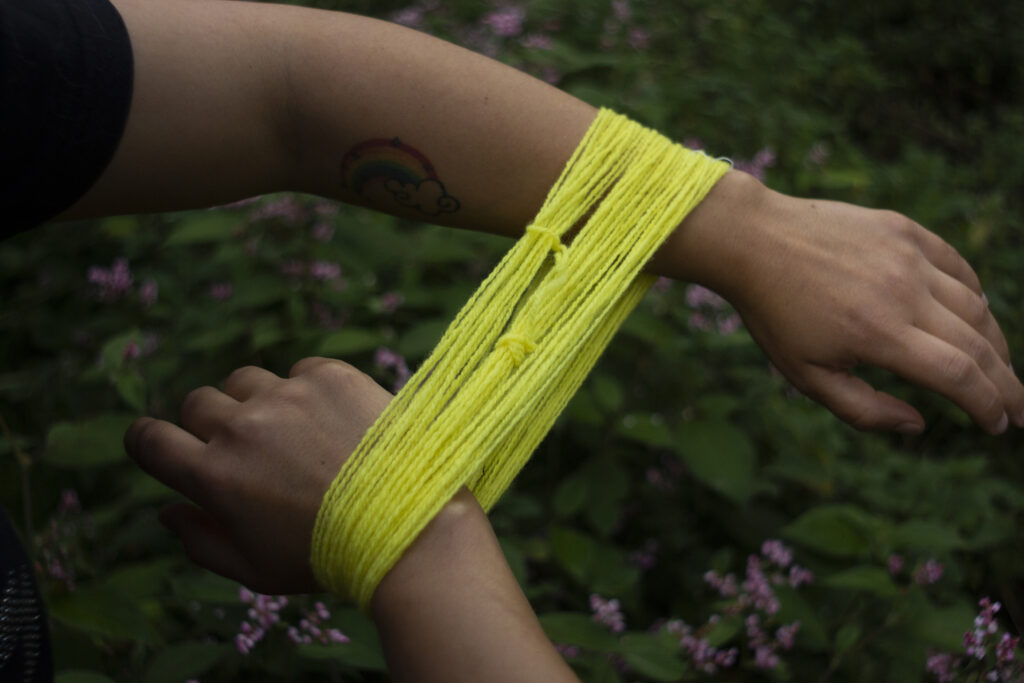Nature’s bounties are continuously in full force, and we are revelling in that generosity with the wonders of dyeing with weld plants
In life, we are constantly and beautifully reminded that we are completely and inextricably inseparable from Nature; whether that’s our bodies, lives or our art. Mother Nature continues to grace us with a compilation of natural elements that continue to inspire us.
Let this blog be the encouragement you need to start creating beautiful garments with the help of dyeing with weld plants.
What is herbal dyeing?
Herbal dyeing is an ancient art form where various dyes are derived from plants. This includes leaves, berries, bark and roots. These natural dyes are not only non-toxic and biodegradable but a natural gift from Mother Nature.
The organic hues and saturations are extracted from these raw and natural materials (such as your plant matter) usually by boiling them in a pot of hot water. A vibrant dye solution is then created and can be used on various natural fabrics.
Given the sheer simplicity of this craft and its gentleness on the Earth, creating your own personalized home-dyed garments should become a norm in your household, or your go-to process for production if you’re a sustainable fashion business owner. It is a great way to support sustainable practice and help contribute to a greener tomorrow.

What is weld and where does it come from?
Before you can get into the nuances and wonders of dyeing with weld plants, it’s important that you start with the most important step: knowledge.
Alright, so let’s discuss the weld plant.
Weld (otherwise referred to as Dyer’s Rocket) is a delicate UK naturalised wildflower that is known for being able to bloom and thrive in limestone or chalk soil. Prior to its luminous petals forming, this plant is also well known for its delightful aroma. That is because the weld buds possess a notable attractive scent that is much like a sweet floral aroma.
Better yet, the colourful potency of this flower’s petals makes for the perfect natural dye too!

What colour is weld dye?
If you find yourself drawn to the warmth and comfort that is associated with the colour yellow, then dyeing with weld plants is for you. This is because weld plants provide you with arguably the most glorious and radiant shade of yellow dye that will transform and uplift any natural garment.
If you are looking to get the most powerful yellow colour out of this European plant, it’s recommended that you only harvest it after its second year. This way, each seed has enough time to bloom and reach its most robust and complex shade of yellow.
The best materials for dyeing with weld plants
I absolutely love this question, because it graces me with the opportunity to shed some light on more sustainable and natural fabric material options. Nature has gifted us with so many incredible fabrics to play with, that in no way harm Her. For this reason, it is essential that we begin familiarising ourselves with these materials.
And so, if you are looking to start your natural dyeing journey, make sure to make use of fabrics that are sourced directly from Earth instead of those sourced from fossil fuels. This means utilising animal or plant-based materials, including:
- Silk
- Linen
- Cotton
- Hemp
- Wool
- Alpaca
- Mohair

How to dye with weld step by step
Step 1: Weigh your dyestuff and your natural textiles
In order to bring out the best colour results, I highly recommend grabbing a scale. You will want to take the garment that you want to dye (make sure it’s dry too) and weigh it on the kitchen scale.
You will then need to weigh up your dried weld plants. You will want to have half the weight in dyestuff to your textiles. If you’re using fresh plants, use the same weight as the weight of your textiles.
Step 2: Mordant your materials
In order to replicate the yellow vibrancy of the weld flower, I highly recommend that you scour and mordant your garments first. That basically means cleaning it and giving it a pre-treatment to make the colour stick!) Using the methods recommended in my Living Colour with the Five Elements online natural dyeing workshop will help your new textiles stand up to sunlight and washing!
Step 3: Place your dyestuff in a dye pot with water to simmer
The aim of this step is to gently extract the colour from the weld plant. To do that, we will need to bring the pieces of weld to a simmer for at least an hour. Afterwards, turn off the heat and leave the plants to steep overnight to attain the most vibrant colours possible.
You can then strain your dye stuff using a sieve and revel in the fact that you just created your own natural dye using weld flowers.
Step 4: Soak your garments in your natural dye
Your excitement levels might have you wanting to immediately place your garment in your luminant yellow dye, but patience is the name of the game here. This is because you will need to soak your natural garment in plain water for a minimum of 30 minutes before you can begin dyeing it.
After 30 minutes, you can remove your textile and place it in the dye pot. Keep in mind that you want your garment to be completely covered by the dye and able to move around freely.
Step 5: Bring your textiles and dye to a gentle simmer
Next up in your dyeing with weld plant journey, you will want to bring your dye pot to a low simmer – where there is a visible amount of stream but no bubbles.
After about an hour, you can switch the heat off and allow the garment to slowly absorb those joyful yellow hues. Better yet, give the garment time to steep overnight with the lid on for the best results.
Step 6: Rinse, dry and enjoy
The next morning, make sure to rinse your dyed fabric under water until you notice that the water is now running clear. You will then need to hang your garment to dry away from direct sunlight.
The final step is to absolutely enjoy your final product and revel in the fact that you were able to create a gorgeous piece of clothing alongside Nature.

The grounding beauty of dyeing with weld plants
There is something very centring and joyful about being able to look at your own creations – what your hands, creativity and Nature were able to collectively collaborate on.
There is just no feeling like it!
When you indulge in natural dyeing, not only are you preserving the wonders of our Earth but actively taking the first step in healing our fashion industry and championing natural, eco-friendly and sustainable fashion.
So, thank you!
If you would like further guidance in your journey towards sustainable fashion, please feel free to join our eco-dyeing fabric course. It will enrich you with the knowledge you need to continue living in a way that’s best connected to the Earth.